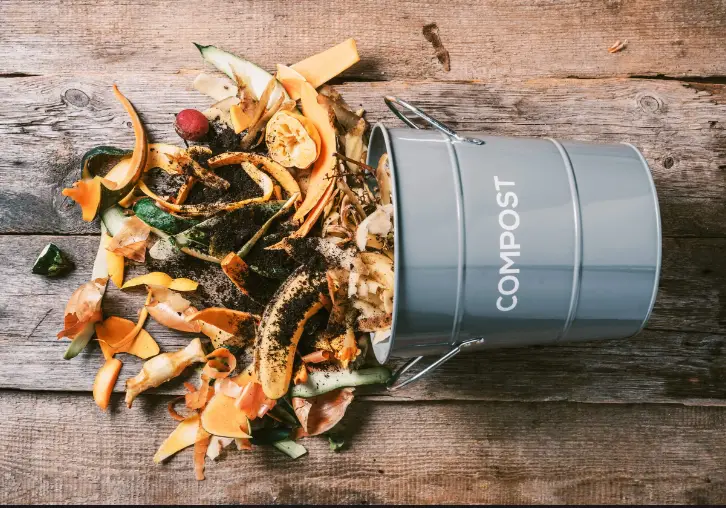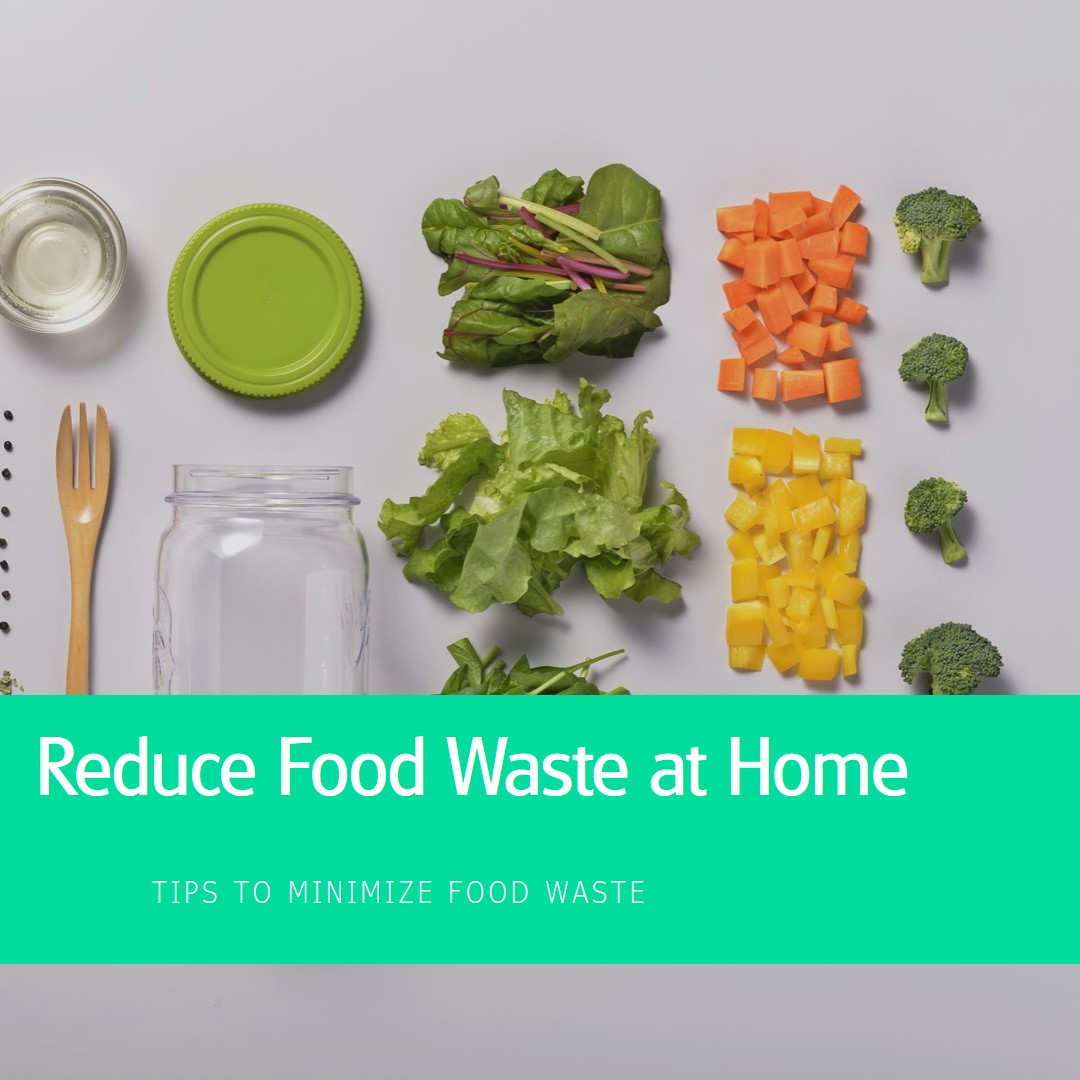Food waste is a global issue that has far-reaching consequences on the environment, economy, and society. According to the United Nations Environment Programme (UNEP), approximately one-third of all food produced for human consumption is lost or wasted globally, amounting to about 1.3 billion tons per year. This staggering amount of waste not only represents a significant financial burden but also contributes to greenhouse gas emissions, water and land degradation, and the depletion of natural resources.
Fortunately, individuals can play a crucial role in reducing food waste by adopting simple yet effective practices in their daily lives. In this comprehensive guide, we’ll explore various strategies and tips to help you minimize food waste at home, contributing to a more sustainable and environmentally friendly lifestyle.
Understanding Food Waste

Before delving into the strategies for reducing food waste, it’s essential to understand the different types of food waste and their sources.
- Food Loss: Food loss occurs during the production, post-harvest, and processing stages of the food supply chain. This type of waste can be caused by factors such as inefficient harvesting techniques, inadequate storage facilities, and poor handling practices.
- Food Waste: Food waste refers to the discarding of edible food at the retail and consumer levels. Common causes of food waste in households include overbuying, improper storage, confusion over “best by” and “use by” dates, and poor meal planning.
By recognizing the different sources of food waste, you can better target your efforts and implement effective strategies to reduce waste at home.
The Impact of Food Waste
Food waste has far-reaching consequences that extend beyond the immediate financial burden on households. Here are some of the major impacts:
- Environmental Impact: The production, processing, and transportation of food contribute significantly to greenhouse gas emissions, water consumption, and land degradation. When food is wasted, these resources are essentially squandered, exacerbating the environmental strain.
- Economic Impact: Food waste represents a significant economic loss for households, businesses, and nations. According to the Food and Agriculture Organization (FAO), the global economic cost of food waste is estimated to be around $940 billion per year.
- Social Impact: In a world where millions of people suffer from hunger and malnutrition, food waste is a moral and ethical issue. Reducing food waste can help alleviate food insecurity and improve access to nutritious food for vulnerable populations.
By minimizing food waste, you can actively contribute to a more sustainable future and help mitigate these far-reaching impacts.
Strategies for Reducing Food Waste at Home

Now that you understand the importance of reducing food waste, let’s explore practical strategies you can implement in your household:
1. Meal Planning and Shopping Smart
One of the most effective ways to reduce food waste is to plan your meals and shop accordingly. By taking stock of what you already have in your pantry, refrigerator, and freezer, you can create a shopping list that minimizes unnecessary purchases and ensures that you buy only what you need.
Tips for Effective Meal Planning:
- Plan your meals for the week or month, considering your household’s schedule and dietary preferences.
- Take inventory of your existing food items and incorporate them into your meal plan.
- Create a shopping list based on your meal plan and check your pantry to avoid buying duplicates.
- Consider buying in bulk for non-perishable items that you use frequently, but be mindful of expiration dates and storage requirements.
- Shop with a reusable bag or container to avoid unnecessary plastic waste.
2. Proper Food Storage
Improper food storage is a significant contributor to food waste. By following proper storage techniques, you can extend the shelf life of your food and reduce spoilage.
Tips for Proper Food Storage:
- Store food items at the appropriate temperature (refrigerator, freezer, or pantry) according to the packaging instructions.
- Use airtight containers or resealable bags to keep food fresh for longer.
- Organize your refrigerator and pantry, placing older items at the front to ensure they are consumed first.
- Learn the difference between “best by,” “use by,” and “sell by” dates, and understand that these are not necessarily expiration dates.
- Consider freezing excess food or leftovers for later consumption.
3. Portion Control and Mindful Eating
Overeating and leaving food on the plate contribute significantly to food waste. By practicing portion control and mindful eating habits, you can reduce the amount of edible food that ends up in the trash.
Tips for Portion Control and Mindful Eating:
- Use smaller plates or bowls to control portion sizes.
- Start with smaller portions and allow yourself to have seconds if still hungry.
- Avoid the temptation of “clean plate syndrome” – it’s okay to leave food on your plate if you’re full.
- Practice mindful eating by chewing slowly, savoring the flavors, and paying attention to your hunger and fullness cues.
- Consider packing up leftovers before sitting down to eat, so they don’t end up on your plate.
4. Creative Cooking and Using Leftovers
Instead of discarding leftover food, get creative in the kitchen and find ways to repurpose and transform them into delicious new meals.
Tips for Using Leftovers:
- Plan for leftover nights in your meal schedule to ensure they get consumed.
- Repurpose leftovers by incorporating them into different dishes, such as soups, stir-fries, casseroles, or omelets.
- Get creative with vegetable scraps and turn them into stocks, vegetable broth, or compost for your garden.
- Learn about fermentation techniques like pickling or making sauerkraut to preserve and extend the life of certain foods.
- Share or donate excess food with friends, family, or local food banks if you cannot consume it all.
5. Composting and Reducing Food Packaging
While preventing food waste should be the primary goal, composting and reducing food packaging can further minimize your household’s environmental impact.
Tips for Composting and Reducing Food Packaging:
- Set up a composting system at home, either a backyard compost bin or a countertop compost container, to turn food scraps into nutrient-rich soil for your garden.
- Choose products with minimal or recyclable packaging to reduce waste.
- Opt for reusable containers, bags, and water bottles instead of single-use plastics.
- Support local farmers’ markets or businesses that prioritize sustainable food packaging.
- Advocate for better food packaging practices and policies in your community.
Overcoming Barriers to Reducing Food Waste
Despite the best intentions, individuals may face various barriers when attempting to reduce food waste at home. Here are some common challenges and strategies to overcome them:
1. Lack of Time and Planning
One of the biggest obstacles to reducing food waste is the perceived lack of time for meal planning, grocery shopping, and cooking from scratch. To overcome this barrier:
- Set aside dedicated time each week for meal planning and grocery shopping.
- Batch cook and freeze portions for busy weeknights.
- Invest in time-saving kitchen tools like slow cookers or pressure cookers.
- Embrace easy and quick meal options like salads, wraps, or stir-fries that utilize leftovers or pantry staples.
2. Confusion over Expiration Dates
Understanding the difference between “best by,” “use by,” and “sell by” dates can be confusing, leading to perfectly edible food being discarded prematurely.
- Learn the true meaning of these dates and use your senses (sight, smell, and taste) to determine if food is still safe to consume.
- Prioritize consuming foods with earlier dates first.
- For perishable items, consider freezing them before they reach their expiration date.
3. Picky Eaters and Food Preferences
Dealing with picky eaters or varying food preferences within a household can make it challenging to utilize all purchased food items.
- Involve family members in meal planning and shopping to accommodate preferences.
- Find creative ways to incorporate less-liked ingredients into dishes (e.g., disguising vegetables in sauces or baked goods).
- Be flexible and open to trying new recipes or food combinations.
4. Limited Kitchen Space and Storage
Households with limited kitchen space or storage may find it challenging to store and organize food properly.
- Invest in space-saving storage solutions like stackable containers or shelving units.
- Rotate your pantry and refrigerator items regularly to ensure older items are consumed first.
- Consider freezing or dehydrating excess produce or perishable items to extend their shelf life.
5. Financial Constraints
Some may perceive reducing food waste as an added expense, particularly when it comes to purchasing storage containers or investing in kitchen tools.
- Start with simple, low-cost solutions like reusing containers or repurposing household items for storage.
- Look for secondhand or discounted kitchen tools and appliances.
- Remember that reducing food waste ultimately saves money in the long run by minimizing unnecessary purchases and maximizing the use of what you already have.
By acknowledging and addressing these barriers, you can develop a more sustainable and waste-conscious mindset, making it easier to incorporate food waste reduction practices into your daily routine.
Engaging the Whole Family

Reducing food waste at home is a collective effort that requires the participation and cooperation of all household members. By involving everyone in the process, you can foster a sense of responsibility, create lasting habits, and make a more significant impact.
Tips for Engaging the Whole Family:
- Educate family members about the importance of reducing food waste and its environmental, economic, and social impacts.
- Assign age-appropriate tasks and responsibilities, such as meal planning, grocery shopping, or composting.
- Make it a fun and engaging activity by involving children in cooking, gardening, or creating DIY storage solutions.
- Celebrate successes and milestones, such as reaching a waste reduction goal or creating a new zero-waste recipe.
- Lead by example and encourage open communication about challenges and solutions.
By making food waste reduction a family affair, you can instill sustainable habits and values that will benefit both your household and the planet.
Resources and Tools for Reducing Food Waste
To aid in your journey toward reducing food waste, there are numerous resources and tools available to help you stay informed, motivated, and organized.
Online Resources and Apps:
- FoodKeeper App (USDA): This app provides storage advice and information on product dating to help maximize the freshness and safety of foods.
- Save the Food (NRDC): This website offers tips, recipes, and educational materials to help reduce food waste.
- Love Food Hate Waste (UK): This campaign provides practical advice, recipes, and tools to help households minimize food waste.
- Olio (App): This app connects neighbors and local businesses to share surplus food and reduce waste.
Cookbooks and Recipe Websites:
- “Waste Not, Want Not” by Melissa Halas-Liang: A cookbook dedicated to reducing food waste through creative recipes.
- “Love Your Leftovers” by Nick Evans: A collection of recipes designed to transform leftovers into delicious meals.
- Love Food Hate Waste Recipes: This website offers a variety of recipes specifically designed to utilize common food items that often go to waste.
Community Resources:
- Local food banks or food rescue organizations: Donate excess food items to help feed those in need.
- Community gardens or composting programs: Participate in local initiatives to reduce food waste and create nutrient-rich compost.
- Neighborhood groups or online forums: Connect with like-minded individuals to share tips, recipes, and experiences related to reducing food waste.
By leveraging these resources and tools, you can stay informed, inspired, and connected with a community of individuals dedicated to minimizing food waste and promoting a more sustainable future.
Frequently Asked Questions (FAQs)
Q: Is reducing food waste really that important?
A: Yes, reducing food waste is incredibly important for several reasons. It helps mitigate environmental impacts, conserve natural resources, save money, and address food insecurity issues. Even small changes in household habits can collectively make a significant difference.
Q: How can I tell if food is still safe to eat?
A: Use your senses (sight, smell, and taste) to determine if food is still safe to consume. Look for signs of spoilage, such as mold, discoloration, or off odors. Additionally, consider the storage conditions and expiration dates as guidelines, but don’t rely solely on them.
Q: Can I compost all types of food waste?
A: While most organic food waste can be composted, there are some exceptions. Avoid composting meat, fish, dairy products, and oils, as they can attract pests and create odors. Additionally, check local regulations regarding composting guidelines in your area.
Q: How can I reduce food waste when eating out or ordering takeout?
A: When dining out or ordering takeout, be mindful of portion sizes and don’t overorder. Request smaller portions or share dishes with others. If you have leftovers, take them home and incorporate them into your meal plan for the next few days.
Q: What should I do with food that is still edible but no longer appealing?
A: If you have food items that are still safe to consume but not visually appealing or past their peak freshness, consider repurposing them in creative ways, such as in soups, smoothies, or baked goods. Alternatively, you can compost them or donate them to local food banks or animal shelters.
Q: How can I get my family on board with reducing food waste?
A: Involve your family members in the process by educating them about the importance of reducing food waste, assigning age-appropriate tasks, and making it a fun and engaging activity. Lead by example, celebrate successes, and encourage open communication about challenges and solutions.
Conclusion
Reducing food waste at home is a powerful and impactful step towards creating a more sustainable future. By adopting the strategies outlined in this comprehensive guide, you can minimize the environmental, economic, and social consequences of food waste while also cultivating a sense of responsibility and mindfulness within your household.
Remember, small changes can make a significant difference when collectively embraced. Start by implementing simple practices like meal planning, proper food storage, and creative cooking with leftovers. Gradually incorporate additional strategies, such as composting and reducing food packaging, to further reduce your household’s carbon footprint.
Engage your family members in the process, and leverage the wealth of resources and tools available to stay informed, motivated, and connected with a community of like-minded individuals. Together, we can create a world where food is valued, respected, and utilized to its fullest potential, ensuring a sustainable and nourishing future for generations to come.
So, embrace the journey towards a waste-conscious lifestyle, and let your actions inspire others to join the movement. Every small step counts in the fight against food waste and the pursuit of a greener, more equitable world.
